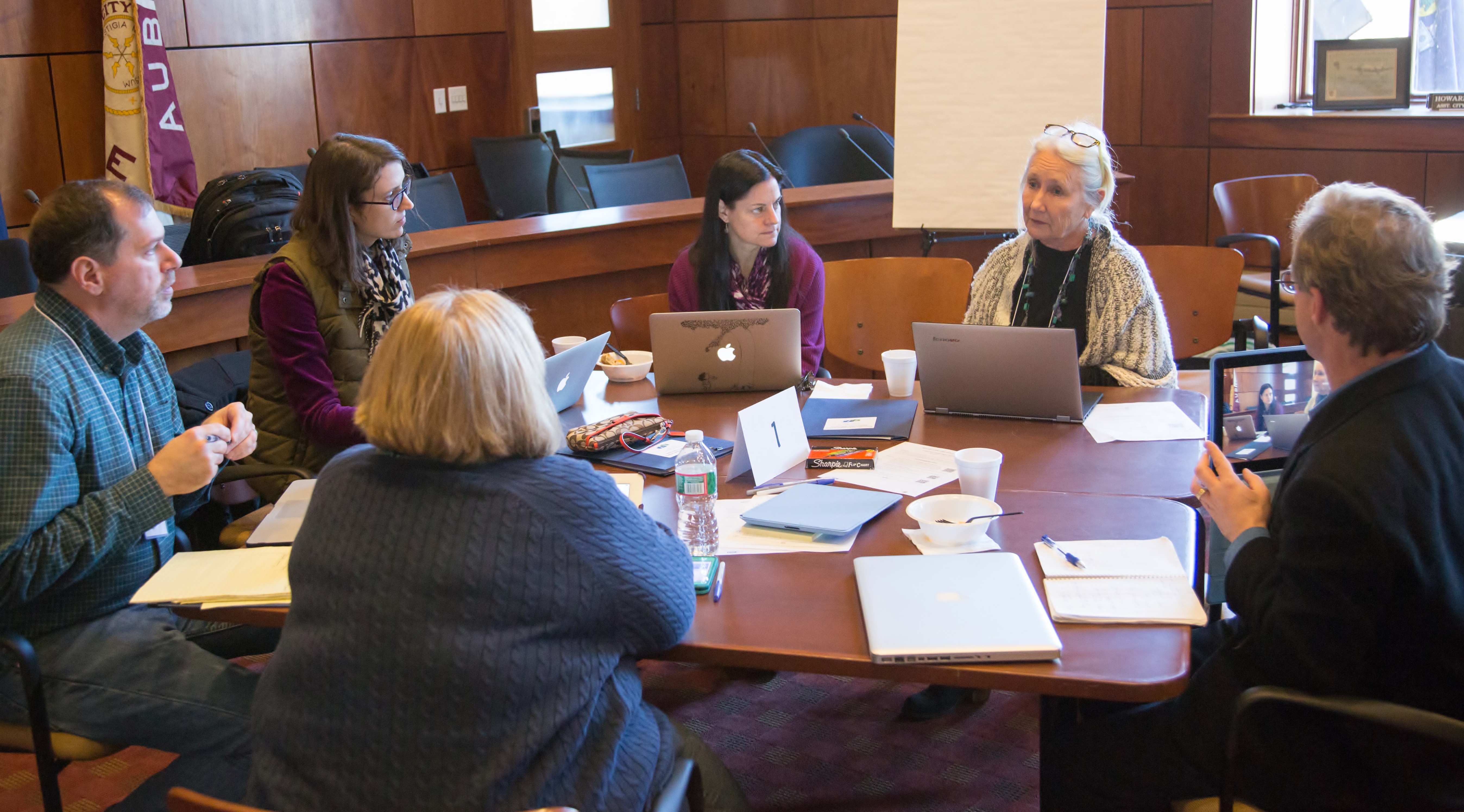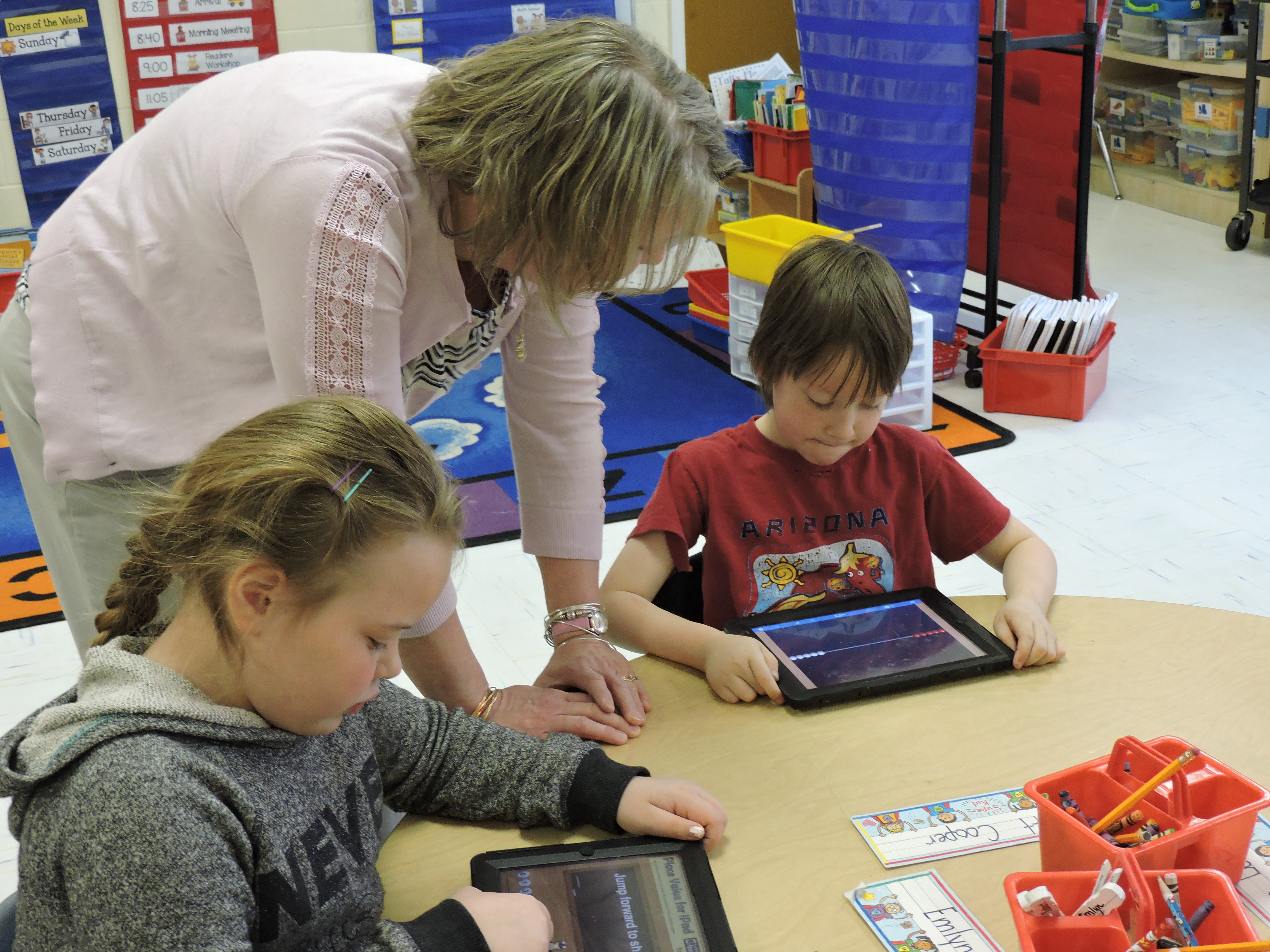Auburn, Maine, Adaptation Site

Interactive STEM‘s partnership district is the Auburn School Department in Androscoggin County, Maine. The district is located in a small city and includes one high school (Grades 9–12), one middle school (Grades 7–8) and six elementary schools (pre-K–6) with two of eight schools classified as “rural fringe.” The total student enrollment is 3,577 with 168 English Learner and 620 students with individualized education programs, or IEPs. The total number of classroom teachers across the district is 305.7.[1] Auburn has a very high percentage of students living in poverty. In two participating elementary schools, the free and reduced-price lunch eligibility rates are 80% and 60%. The district is situated on the Androscoggin River with the neighboring small city of Lewiston across the river to the east. Surrounding the Lewiston/Auburn districts are school administrative districts serving multiple small rural towns.
The Auburn School Department is currently engaged in the implementation of multiple improvement efforts including one titled Advantage 2014 that is designed to improve literacy and mathematics achievement of early elementary learners (K–3) by leveraging the use of interactive apps and tools on iPad mobile tablets. The initiative that began in 2011 provides ongoing professional development incorporating yearly summer institutes, workshops spread across each school year, the incorporation of training during elementary level early release days, and the use of distributed peer leadership and support.
While the district has seen improvement in early literacy, mathematics scores remain very low across the district with significant gaps among subgroups. Over the past decade, as Auburn education budgets have been reduced, cuts have occurred in district professional development funds, content specialists including mathematics coaches, and dedicated professional development release time. The district is deeply committed to the presence of a rich professional learning culture, and they have expressed a need for the research support and capacity-building that the Research + Practice Collaboratory can afford.
Project Description
Auburn School Department leadership is committed to collaborative design and testing of aspects of their improvement efforts through the engagement of a broad set of education community stakeholders. This commitment is evident in the creation of the Advantage 2014 design team, composed of administrators, teachers, parents, a district technology director, and school-board leadership. As the effort has progressed, the design team has collaboratively helped to guide adaptations to the design of the professional development and to the interactive tools that the district has made available to teachers and students.
School and district leaders have determined that the persistent problem of low mathematics achievement is an area that requires deeper investigation and focus. They are committed to work with the Interactive STEM team as well as researchers and STEM education specialists to engage in iterative cycles of collaborative design and testing to improve practice over a 2.5–year period. This team will also engage district administrators and staff presently working on graduate and doctoral work to build internal capacity over the life of the adaptation site work. The Interactive STEM team at EDC has engaged researchers from the University of Southern Maine to strengthen local research and practice relationships and enhance capacity within the state on these issues to inform and sustain ongoing and future improvement efforts.
While the use of mobile technologies incorporating interactive technology tools and applets to support mathematics achievement is the focus of the work, specific research questions are still being finalized. Questions that have surfaced in preliminary discussions are:
- What does research say about what types of mathematics learning are well supported by use of interactive tools on mobile technologies and what types are not?
- What supports do teachers and administrators need to be able to select interactive apps that are well targeted for specific types of student learning in mathematics?
- One of the successes of using these mobile technologies and interactive apps is the ability to differentiate instruction. In what ways can interactive tools be used both to differentiate instruction and to close achievement gaps among higher performing and struggling learners?
[1] U.S. Department of Education. Institute of Education Sciences, National Center for Education Statistics.







